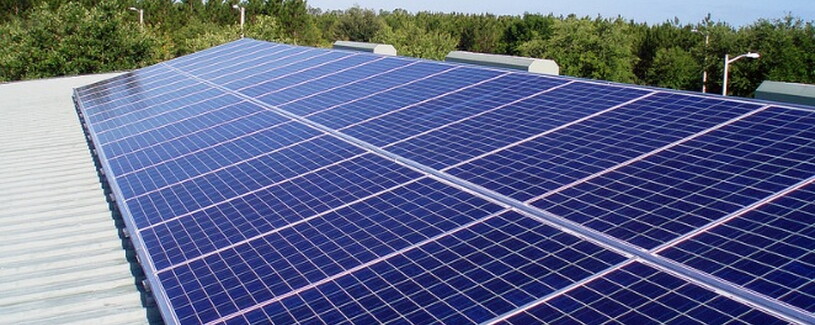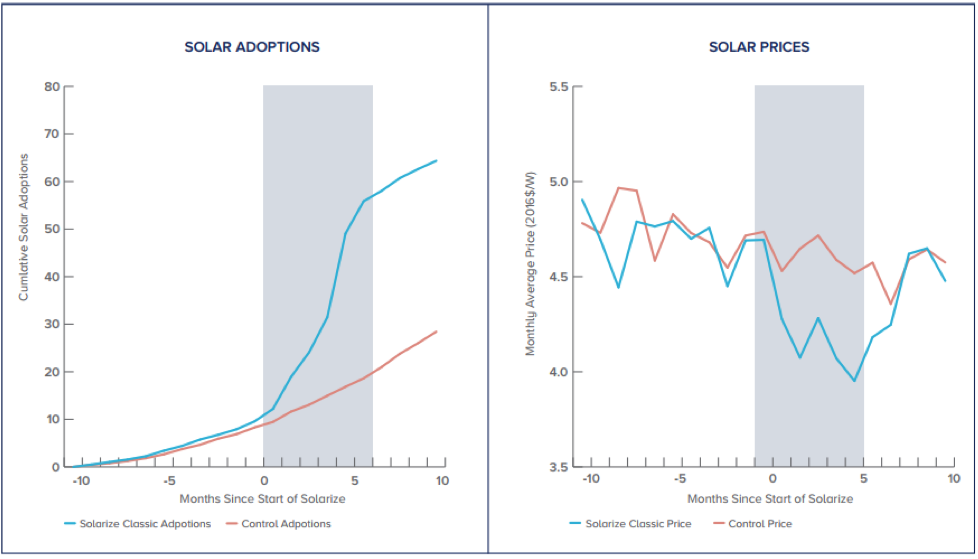Accelerating Residential Solar: Does Messaging Matter?
Communications impact adoption rates of solar diffusion among low- and moderate-income communities.

As the residential solar market continues to grow, how proponents communicate the benefits of the technology can impact adoption rates and has implications for solar diffusion among low- and moderate-income communities.
Solarize – A Grassroots Program to Accelerate Solar Adoption
In Connecticut, the residential solar market grew rapidly between 2004 and 2015. While the growth rate has slowed since 2015, homeowners are still steadily adopting rooftop solar, in part because of the continued statewide presence of Solarize.
Solarize campaigns use community-based social networks to promote the adoption of solar through a group pricing scheme. Since 2012, over 80 Solarize campaigns have been completed across Connecticut, where multiple campaigns are launched concurrently (in “rounds”).
With funding from the Department of Energy, the Solar Energy Evolution and Diffusion Studies (SEEDS) project used these Solarize campaigns as the foundation for a series of randomized field trials that helped illuminate the most effective strategies for solar adoption. The first phase of SEEDS took place between 2013 and 2016.
The main findings were twofold. First, the diffusion of awareness about solar via social networks is an effective method for boosting adoption. For example, during a six-month timeframe, the presence of one rooftop installation increased the number of installations within a half-mile radius by almost 50%.
Second, in addition to leveraging social networks, it is important to recruit high-impact volunteers—so-called “solar ambassadors”—who can proactively engage and educate their communities. Towns where solar ambassadors had a strong presence yielded consistently higher solar adoption rates.

Connecticut’s most recent Solarize campaign, its eighth round, concluded in the third quarter of 2017 and was used to study two distinct messaging approaches across seven towns. The goal of this study, titled “SEEDS II,” was to test whether, and how much, different messages about the value of solar impact rates of adoption. This post summarizes the core results.
SEEDS II
Leveraging the lessons learned from the first phase of SEEDS I, SEEDS II is examining the role of various messaging strategies on the effectiveness of Solarize. In particular, SEEDS II explores how these messages work across different income groups. The SEEDS II team is especially interested in the low- and moderate-income (LMI) populations. Solarize Round 8 was the first series of campaigns to take place during SEEDS II, and the results[1] are captured in the cumulative installations chart below (Figure 2).

The campaigns generated over 800 leads based on initial conversations with homeowners. Of those, 130 contracts were signed for a total of 1.1 MW by the end of the campaign. It is worth noting that, while 130 contracts were signed as part of the Solarize campaigns (through the town-chosen installer), over 300 installations took place during the campaign period in Solarize towns. To account for delays in reporting, installations where financing was approved by the Connecticut Green Bank within a month of the campaign’s conclusion were included in Figures 2, 3, and 4.
The preliminary findings below suggest that certain messages may elicit more interest in solar than others.
Understanding the Impact of Messages
A key aspect of SEEDS II is testing two different types of messages to measure their effectiveness in promoting residential solar adoption. One type of message was community-oriented, based on the idea that providing information about how installing solar panels is a community activity can create a positive norm around solar energy and will spur adoption within the town. The other type of message focused on the individual household, with the idea that providing information about how solar panels can save money and stabilize electricity bills will be effective at increasing installations.
In 2017, Connecticut saw seven Solarize campaigns launched across the state, beginning in the spring and running through summer. Each campaign lasted about 18 weeks.

The graph below shows the number of installations per thousand owner-occupied households by message type (i.e. community or individual). Towns in which the campaign promoted individual messaging showed nearly 50 percent more installations as compared to those that used community messaging.

The chart further distinguishes between total installations and those carried out by the town-designated Solarize installer. In total, about 28 percent of installations carried out during the Solarize campaign were done by the town-designated installer, though there was some variability. The median ratio across the seven towns was 33 percent, with the greatest proportion in Granby (84.4 percent) and the smallest proportion in Hartford (4.5 percent).
This disparity between towns could be attributed to the number of owner-occupied households—Hartford had 10,877 in 2016 (see Table 1)—or level of competition between installers. It could also be due to pre-existing local relationships; the town-selected installer in Ellington, for instance, is well-known by the community and also saw over 80 percent of installations carried out by town-selected installers). We also must mention the caveat that this sample size is quite small, as we so far have the results from only one round. In a few months we will have results from another round, doubling our sample, which will give us even more confidence in our results.
Conclusion
Through SEEDS I, we investigated the pathways and tipping points that lead to greater residential solar adoption. SEEDS II builds on the findings from SEEDS I and delves into how solar is messaged in communities, its value to the grid (e.g. congestion reduction), and adoption patterns among LMI communities.
Based on the data from this most recent round of Solarize, the messages that Solarize campaigns employ appear to make a difference in solar adoption. The individual-oriented message yielded higher installation rates. Factors like whether a Solarize campaign had occurred previously in a given town did not appear to influence this result. For instance, Milford (individual message) and South Windsor (community message) both hosted campaigns three years earlier. However, Milford posted one of the highest installations per thousand households, while South Windsor had one of the lowest number of installations.
Another objective of the Solarize campaigns is to test whether the messages reach LMI households. Literature suggests that LMI households may have the most to gain from adopting solar. (Upfront financing is the greatest challenge for LMI households due to limited access to capital.) One argument is that a higher proportion of an LMI household’s income is dedicated to utility bills and so there is an obvious benefit associated with stabilizing energy bills. According to the 2011 Low Income Home Energy Assistance Program (LIHEAP) Home Energy Notebook, LMI households spend four times as much in percentage points of their income on heating and cooling expenses.
Looking at all fourteen Solarize towns combined, from both Rounds 8 and 9, several towns are classified as LMI. We are very interested to see whether, and how much, the effectiveness of messaging strategies varies between income brackets.
The Round 9 campaigns have recently concluded or are about to conclude. These campaigns are similarly testing the effectiveness of the two messages and, as mentioned above, the results will bolster the volume of data available for analysis once it is made available.
[1] Non-Solarize towns are ones that did not host Solarize campaigns during round 8, though they may have hosted campaigns during previous periods. It includes pre-assigned, randomized control towns based on similar demographics.